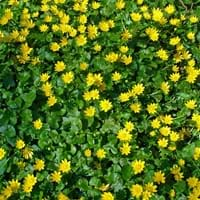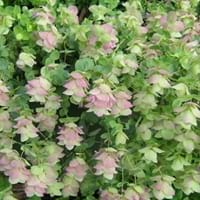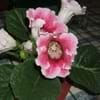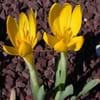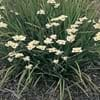About Lesser Celandine and Ornamental Oregano
Life Span
Perennial
Perennial
Type
Bulb or Corm or Tuber
Perennial
Origin
Europe, Russia/Siberia, Northern Africa, Western Asia
Hybrid origin
Types
buttercup
Kent Beauty
Amethyst Falls
Barbara Tingey
Habitat
meadows, Shady Edge, Woodland Garden Dappled Shade
Grassland, Open scrub, Rocky areas
USDA Hardiness Zone
Not Available
5-8
Sunset Zone
21,22
Not Available
Habit
Clump-Forming
Clump-Forming
Minimum Height
Not Available
Minimum Width
Not Available
Flower Color
White, Yellow, Red, Green
Pink
Flower Color Modifier
Bicolor
Bicolor
Fruit Color
Not Available
Not Available
Leaf Color in Spring
Not Available
Dark Green
Leaf Color in Summer
Light Green
Dark Green
Leaf Color in Fall
Several shades of Green
Dark Green
Leaf Color in Winter
Light Green
Light Green
Leaf Shape
Heart-shaped
Oval
Plant Season
Spring
Summer, Fall
Sunlight
Partial Sun, Partial shade
Full Sun
Type of Soil
Loam, Sand
Loam
The pH of Soil
Acidic, Neutral
Neutral, Alkaline
Soil Drainage
Well drained
Well drained
Bloom Time
Not Available
Late Summer, Early Fall
Tolerances
Drought
Drought
Where to Plant?
Container, Ground
Container, Ground, Pot
How to Plant?
Divison, reseeds
Seedlings
Plant Maintenance
Medium
Medium
Watering Requirements
Average Water Needs
Allow soil to be completely dry in between waterings, Does not require lot of watering, Water twice a day in the initial period, Water when soil is dry
In Summer
Lots of watering
Lots of watering
In Spring
Moderate
Moderate
In Winter
Average Water
Average Water
Soil pH
Acidic, Neutral
Neutral, Alkaline
Soil Type
Loam, Sand
Loam
Soil Drainage Capacity
Well drained
Well drained
Sun Exposure
Partial Sun, Partial shade
Full Sun
Pruning
Remove damaged leaves, Remove dead branches, Remove dead leaves
Remove damaged leaves, Remove dead branches, Remove dead leaves
Fertilizers
All-Purpose Liquid Fertilizer
All-Purpose Liquid Fertilizer
Pests and Diseases
Red blotch
Red blotch
Plant Tolerance
Drought
Drought
Flower Petal Number
Not Available
Single
Fragrant Leaf
No
Not Available
Foliage Texture
Not Available
Fine
Foliage Sheen
Not Available
Matte
Attracts
Ants, Insects
Butterflies
Allergy
Not Available
Not Available
Aesthetic Uses
Showy Purposes
Showy Purposes
Beauty Benefits
Not Available
Not Available
Environmental Uses
Air purification
Air purification
Medicinal Uses
Antirheumatic, Astringent, Vitamin C
Bloating, Bronchitis, Cough, Cramps, Croup, Gastrointestinal disorders, Headache, Rheumatoid arthritis, Urinary tract problems
Part of Plant Used
Leaves, Root
Leaves
Other Uses
Cleanser
Employed in herbal medicine, Used As Food
Used As Indoor Plant
Not Available
Yes
Used As Outdoor Plant
Yes
Yes
Garden Design
Mixed Border, Wildflower
Container, Edging, Groundcover, Mixed Border
Botanical Name
Ranunculus ficaria
ORIGANUM 'Rose Dome'
Common Name
Figwort, Lesser Celandine
Ornamental Oregano
In Hindi
Lesser Celandine
सजावटी अजवायन
In German
Scharbockskraut
Ornamental Oregano
In French
Ficaire
ornement origan
In Spanish
celidonia menor
Ornamentales orégano
In Greek
Lesser Celandine
καλλωπιστικά Ρίγανη
In Portuguese
Lesser Celandine
ornamental Oregano
In Polish
Ziarnopłon wiosenny
ozdobne Oregano
In Latin
Pavasara mazpurenīte
decentius Oregano
Phylum
Magnoliophyta
Not Available
Class
Magnoliopsida
Magnoliopsida
Order
Ranunculales
Not Available
Family
Ranunculaceae
Lamiaceae
Clade
Angiosperms, Eudicots
Angiosperms, Eudicots
Tribe
Not Available
Mentheae
Subfamily
Not Available
Pitcairnioideae
Number of Species
Not Available
Properties of Lesser Celandine and Ornamental Oregano
Wondering what are the properties of Lesser Celandine and Ornamental Oregano? We provide you with everything About Lesser Celandine and Ornamental Oregano. Lesser Celandine doesn't have thorns and Ornamental Oregano doesn't have thorns. Also Lesser Celandine does not have fragrant flowers. Lesser Celandine has allergic reactions like Not Available and Ornamental Oregano has allergic reactions like Not Available. Compare all the properties and characteristics of these two plants. Find out which of these plant can be used as indoor plant. If you are interested to decorate your house and garden, find out aesthetic uses, compare them and select the plant which will beautify your surrounding. Along with beautification, try comparing medicinal and edible uses of Lesser Celandine and Ornamental Oregano and you can choose the plant having best and most benefits.
Season and Care of Lesser Celandine and Ornamental Oregano
Season and care of Lesser Celandine and Ornamental Oregano is important to know. While considering everything about Lesser Celandine and Ornamental Oregano Care, growing season is an essential factor. Lesser Celandine season is Spring and Ornamental Oregano season is Spring. The type of soil for Lesser Celandine is Loam, Sand and for Ornamental Oregano is Loam while the PH of soil for Lesser Celandine is Acidic, Neutral and for Ornamental Oregano is Neutral, Alkaline.
Lesser Celandine and Ornamental Oregano Physical Information
Lesser Celandine and Ornamental Oregano physical information is very important for comparison. Lesser Celandine height is 5.10 cm and width 10.20 cm whereas Ornamental Oregano height is Not Available and width Not Available. The color specification of Lesser Celandine and Ornamental Oregano are as follows:
Lesser Celandine flower color: White, Yellow, Red and Green
Lesser Celandine leaf color: Not Available
Ornamental Oregano flower color: Pink
- Ornamental Oregano leaf color: Dark Green
Care of Lesser Celandine and Ornamental Oregano
Care of Lesser Celandine and Ornamental Oregano include pruning, fertilizers, watering etc. Lesser Celandine pruning is done Remove damaged leaves, Remove dead branches and Remove dead leaves and Ornamental Oregano pruning is done Remove damaged leaves, Remove dead branches and Remove dead leaves. In summer Lesser Celandine needs Lots of watering and in winter, it needs Average Water. Whereas, in summer Ornamental Oregano needs Lots of watering and in winter, it needs Average Water.
